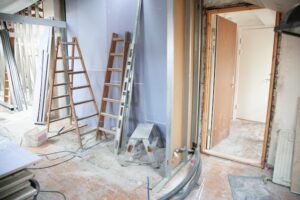
Winter is just around the corner, and with it comes the need to ensure your home is ready to withstand the cold weather. From protecting your pipes to sealing drafts, getting your home winter-ready can save you money on energy bills and prevent costly repairs. This comprehensive guide will walk you through everything you need to know to make sure your home is cozy, safe, and efficient this winter.
Insulate Your Home for Maximum Warmth
Proper insulation is essential to keeping your home warm and energy-efficient during the winter months. Start by checking your attic, walls, and floors for adequate insulation. Adding insulation to these areas can significantly reduce heat loss, keeping your home warmer and reducing energy costs.
Inspect your windows and doors for drafts. Use weatherstripping and caulk to seal any gaps around these areas. This simple step can prevent cold air from entering and warm air from escaping, making your home more comfortable and energy-efficient.
Don’t forget about your pipes. Insulate any exposed pipes in your basement, attic, and crawl spaces to prevent them from freezing and bursting during extreme cold.
Seal Windows and Doors
Drafty windows and doors can significantly impact your home’s warmth and energy efficiency. Start by inspecting all windows and doors for gaps or cracks that could allow cold air to enter and warm air to escape.
Apply weatherstripping around windows and doors to create a tight seal. This simple step can have a significant impact on your home’s energy efficiency and comfort.
Use caulk to seal any gaps or cracks in the window frames and doorways. Ensure the caulk is applied smoothly and evenly for the best results.
Clean and Inspect Your Fireplace
A cozy fire in the fireplace is one of the best ways to stay warm during the winter. However, it’s essential to ensure your fireplace is safe and efficient. Start by having your chimney inspected and cleaned by a professional. This service will remove any creosote buildup, reducing the risk of chimney fires.
Check the damper to ensure it opens and closes properly. A well-functioning damper helps control airflow and prevents heat loss when the fireplace is not in use.
Consider installing a fireplace insert or glass doors. These additions can improve the efficiency of your fireplace, helping to retain heat and reduce drafts.
Check Your Heating System
Your heating system will be working overtime during the winter, so it’s essential to ensure it’s in good working order. Start by scheduling a professional furnace repair or maintenance service. This service will identify any potential issues and ensure your system is running efficiently.
Replace your furnace filter regularly. A clean filter improves airflow and efficiency, reducing your energy bills and prolonging the life of your heating system.
Consider upgrading to a programmable thermostat. These devices allow you to set your heating schedule, ensuring your home is warm when you need it and saving energy when you’re not home.
Prepare Your Plumbing
Frozen pipes can cause significant damage and costly repairs. Take steps to protect your plumbing system from the cold. Start by insulating any exposed pipes in unheated areas like the basement, attic, and crawl spaces.
Disconnect and drain outdoor hoses and shut off the water supply to outdoor faucets. This step prevents water from freezing in the pipes and causing them to burst.
Allow faucets to drip slowly during extreme cold. This simple step can keep water moving through the pipes, reducing the risk of freezing.
Protect Against Ice Dams
Ice dams can form on your roof during the winter, leading to water damage and costly repairs. Take steps to prevent ice dams before the cold weather arrives. Start by ensuring your attic is well-insulated and ventilated. Proper insulation and ventilation help maintain a consistent temperature, reducing the risk of ice dams forming.
Clean your gutters and downspouts to ensure proper drainage. Clogged gutters can lead to water buildup and ice dams on your roof.
Consider installing roof heat cables. These cables can help melt ice and snow, preventing ice dams from forming and reducing the risk of water damage.
Maintain Your Outdoor Spaces
Don’t forget about your outdoor spaces when preparing for winter. Start by trimming trees and shrubs near your home. Overhanging branches can break under the weight of snow and ice, causing damage to your roof or siding.
Store outdoor furniture and garden tools in a safe, dry place. This step protects your belongings from the elements and extends their lifespan.
Clear your driveway and walkways of any debris. This simple step makes it easier to shovel snow and reduces the risk of slips and falls during the winter.
Test Smoke and Carbon Monoxide Detectors
With the increased use of heating systems and fireplaces during the winter, the risk of fire and carbon monoxide poisoning also increases. Ensure your home is safe by testing your smoke and carbon monoxide detectors. Replace the batteries if needed and ensure the detectors are functioning properly.
Consider installing additional detectors in key areas like the basement, near sleeping areas, and close to the kitchen. These devices provide an extra layer of protection for your home and family.
Review your fire escape plan with your family. Ensure everyone knows the safest routes out of the house and where to meet outside in case of an emergency.
Getting your home ready for winter may seem like a daunting task, but with careful planning and preparation, you can ensure your home is cozy, safe, and energy-efficient. By following these essential tips, you’ll be well-prepared to face the cold weather and enjoy a warm, comfortable home all winter long.


